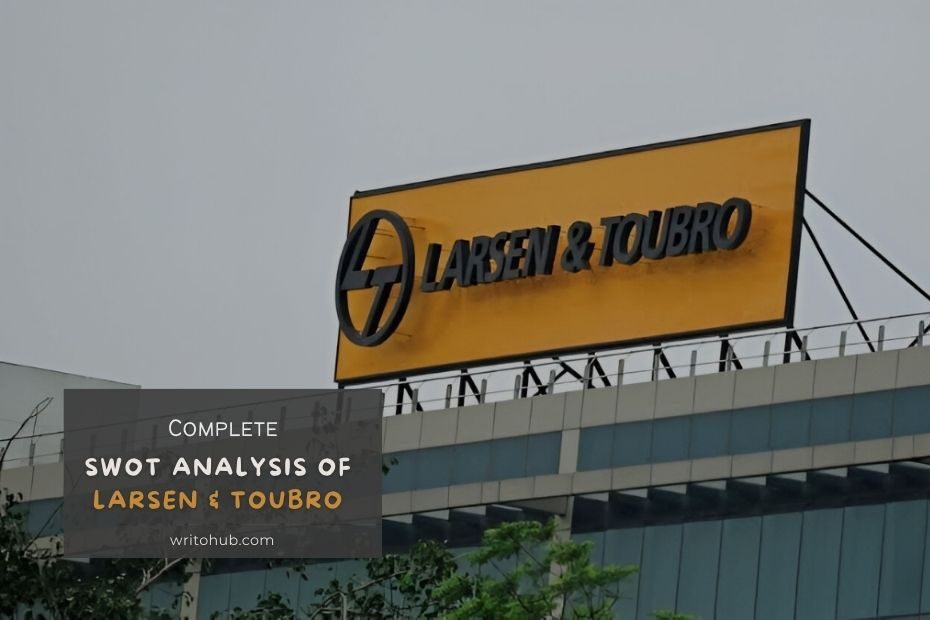Larsen & Toubro (L&T), a renowned Indian multinational conglomerate, operates across diverse sectors.
A SWOT analysis of L&T reveals its strengths, weaknesses, opportunities, and threats, offering insights into its strategic position in the dynamic market.
Strengths in the SWOT Analysis of L&T
- Diverse Portfolio: L&T operates in various sectors, including engineering, construction, technology, and manufacturing, which provides diversification and resilience.
- Strong Engineering Expertise: The company boasts a reputation for engineering excellence, technical competency, and project management capabilities.
- Global Presence: L&T has a global footprint, with a presence in multiple countries, allowing it to tap into international markets.
- Financial Stability: The company maintains financial stability and strong balance sheets, essential for undertaking large-scale projects.
- Innovation and R&D: L&T invests in research and development, fostering innovation in its product offerings and project execution.
Weaknesses in the SWOT Analysis of L&T
- Dependence on Domestic Market: A significant portion of L&T’s revenue comes from the Indian market, making it vulnerable to economic fluctuations in the country.
- Project Delays: The construction and infrastructure sector is prone to project delays and cost overruns, impacting profitability.
- Regulatory Challenges: Government regulations and policies, including environmental clearances, can affect project timelines and costs.
- Intense Competition: The company faces stiff competition from both domestic and international players across various sectors.
- Cyclicality: L&T’s business is cyclical, with fluctuations in demand for infrastructure and construction projects.
Opportunities in the SWOT Analysis of L&T
- Infrastructure Development: The government’s focus on infrastructure development, including roads, railways, and smart cities, presents significant growth opportunities.
- Technology Integration: Leveraging technology for digital construction, smart infrastructure, and industrial automation can enhance project efficiency.
- Global Expansion: Exploring emerging markets in Asia, the Middle East, and Africa can diversify revenue sources and tap into growing economies.
- Renewable Energy: Expanding investments in renewable energy and green technologies aligns with global sustainability trends.
- Strategic Partnerships: Collaborating with global engineering and technology firms can lead to innovations and enhance project capabilities.
Threats in the SWOT Analysis of L&T
- Economic Downturns: Economic recessions or downturns can lead to reduced government and private sector spending on infrastructure and construction projects.
- Regulatory Changes: Evolving regulations, permitting delays, and policy uncertainties can impact project timelines and costs.
- Commodity Price Volatility: Fluctuations in the prices of commodities, such as steel and cement, can impact construction project costs.
- Geopolitical Factors: Political instability, trade tensions, and currency exchange rate fluctuations can affect international operations.
- Technological Disruption: Rapid advancements in technology can disrupt traditional engineering and construction processes.
Conclusion
L&T’s SWOT analysis highlights its position as a diversified conglomerate with a strong engineering legacy.
To sustain and enhance its market presence, L&T must leverage its strengths, address weaknesses, seize opportunities, and mitigate threats while adapting to changing market dynamics and government policies.
